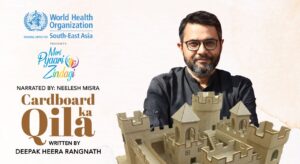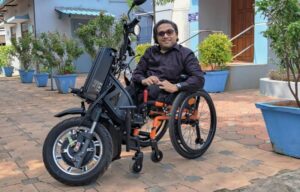The Women and Child Development Department, Odisha, is set to introduce fish and fish-based products in the supplementary nutrition programme for children (3-6 years of age), pregnant and nursing women, and adolescent girls in 50 anganwadi centres in Mayurbhanj district for six months.
A memorandum of understanding (MoU) in this regard was signed between the state government and World Fish, a non-profit that aims to harness the potential of fisheries and aquaculture to reduce poverty and hunger in developing countries. It is a five-year technical collaboration between the department and the non-profit.
#PressRelease on signing of MoU between Department of WCD & MS and #WorldFish for inclusion of fish and fish based products in #SupplementaryNutrition. pic.twitter.com/ATjcMcbl8T
— Department of WCD, Government of Odisha (@WCDOdisha) November 11, 2020
The Central Institute of Fisheries Technology, Kochi, research partner of World Fish, is to supply the low-cost polyhouse solar fish driers for the programme. Small fish such as anchovy, Indian sardine and lesser sardine would be given to the beneficiaries in dried or powder form.
Fifteen grammes of fish powder would be added to the daily curry cooked for children at anganwadi centres, while dried small fish would be given to adolescent girls and pregnant women as part of ‘take home’ ration.
“Since we are aware of the high nutritional value of fish, we are introducing it in one district as a pilot project,” Anu Garg, principal secretary, Women and Child Development Department, Odisha, told The Indian Express.
All the current beneficiaries will be surveyed, the implementation of the scheme observed, and its acceptance among children studied before other districts are brought under the programme, she added.
Nutritionists and Right To Food activists have welcomed this move. “Odisha is the first state to introduce fish products in the diet of anganwadi kids and pregnant and lactating women. Fish can be additional nutrient support for children and women. Apart from protein, it has calcium and other minerals,” Sameet Panda, lead member of the Right to Food Campaign, Odisha, told Gaon Connection.
Veena Shatrugana, clinical nutritionist and retired deputy director of National Institute of Nutrition, Hyderabad, called the move “a brilliant idea”. “Culturally, fish is a desirable food in Odisha and we should make it possible to provide people what they enjoy eating. Also fish is a good source of protein, vitamin A and fatty acid. With this move, children will grow taller and healthier,” she told Gaon Connection.
India has the world’s largest early care programme called the Integrated Child Development Services (ICDS), launched by the Government of India in 1975, to combat malnutrition and ill-health of children (0-6years of age), and pregnant and lactating women. Through anganwadi centres, women and children are provided hot cooked meals and take-away home ration as part of the supplementary nutrition programme under the ICDS.
Under the supplementary nutrition programme, children (6 months-6 years) and pregnant & nursing women are the beneficiaries. As per the WCD data of the state, of the total 4.1 million (4,127,050) beneficiaries in Odisha, 1.7 million (1,793,896) children in the age group of six months to three years are provided take home ration; and 0.6 million (613,775) children in the age group of 3-6 years receive hot meals at anganwadis. Besides this, there are about 0.7 million (719,379) pregnant and nursing women.
Although, the state’s 71,306 anganwadis are shut due to the COVID-19 pandemic, “take-home ration is being provided to women and children at these centres as of now, and at some places anganwadi workers themselves deliver it”, said Panda.
As per the WCD of the state, anganwadi workers deliver people’s take-home ration in lieu of hot cooked meals, at their doorsteps once a month. Apart from this, three eggs a week are being delivered at the doorstep of beneficiaries.
Ten women self-help groups from the district have been roped in for the pilot programme on fish products. These SHGs will be provided support and guidance by technical experts from the non-profit in the preparation of fish powder. These groups will be involved in nutrition-sensitive fish production systems in gram panchayat tanks and fish processing. They will be trained and provided market linkage.
According to the National Family Health Survey-4 (2015-16), 43.5 per cent and 43.8 per cent children under 5 years in Mayurbhanj district are stunted and underweight, respectively. This is more than the total data of 34.1 per cent (stunted) and 34.4 per cent (underweight) for the state. The data also shows 45.6 per cent pregnant women in the 15-49 age group in the district are anaemic as against the state total of 47.6 per cent.
“Nutritional and mineral deficiency is quite high in Odisha. When it comes to the tribal districts, malnutrition is more than 40 per cent in children and women,” said Panda.
According to the Population Census 2011, Odisha has the third-highest percentage of tribal population in the country (9.5 million). At 1.48 million (50 per cent of the district’s total population), Mayurbhanj district has the highest tribal population. Nutritionist Shatruguna believes the main challenge will be ensuring that those in the tribal belt avail the benefits due to them. “Malnutrition is a major problem in tribal areas. Children do not put on weight, they don’t gain much height,” she said. “And that is why we have these food programmes because there is no assured food supply in such areas. We have PDS (public distribution system), but as many don’t have Aadhar cards, it becomes difficult for them to access the food,” she added.
The state government’s initiative is likely to increase the per head take away ration cost. As of now, the per head ration cost of the take home ration is Rs 9.50 for pregnant and lactating mothers, Rs eight for children under three years and Rs 12 for severely malnourished children.
Gaon Connection tried contacting Anu Garg, principal secretary, WCD, and Rashmi Ranjan Nayak, joint secretary, Integrated Child Development Services. However, several calls remained unanswered. The story will be updated as and when we get a response.



















